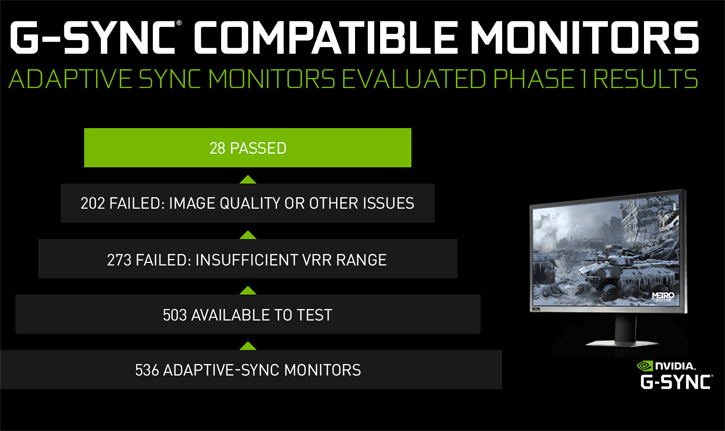Ever since NVIDIA opened up Adaptive-Sync in their drivers as G-Sync (compatible) the display monitor vendors can get a G-Sync label and validation. In order to get that G-Sync label, the monitor manufacturers need to submit their display to NVIDIA for testing.
As it turns out, quite a number of monitors submitted to NVIDIA, do not pass their certification test. NVIDIA obviously sets the criteria for these test but roughly 95 percent of the currently 475 models tested, failed.
With GeForce RTX graphics cards delivering high levels of performance in the latest titles, such as Apex Legends, Murderhaw, Rage 2, and World War Z, our review has shown that gamers buying displays with VRR refresh rates that max out at 75Hz the majority of their time gaming VRR.
For G-SYNC Compatible displays, we saw the maximum refresh rates during testing, and the breakdown of passes and fails: over 300 failed monitors had a max 75Hz refresh rate or lower, and / or super slim VRR ranges, only 3 monitors that 120Hz, and the majority of the others have a refresh rate of 144Hz or higher. However, 76% of these higher refresh rates are G-SYNC Compatible monitors at 1920x1080, limiting game detail and clarity.
For the remaining 230 displays, 202 were failed specific image quality tests or had other problems. Among them, flickering.
To sum it up:
- 28 passed
- 202 failed for image quality or “other” issues
- 273 failed for having insufficient Variable Refresh Rate ranges




